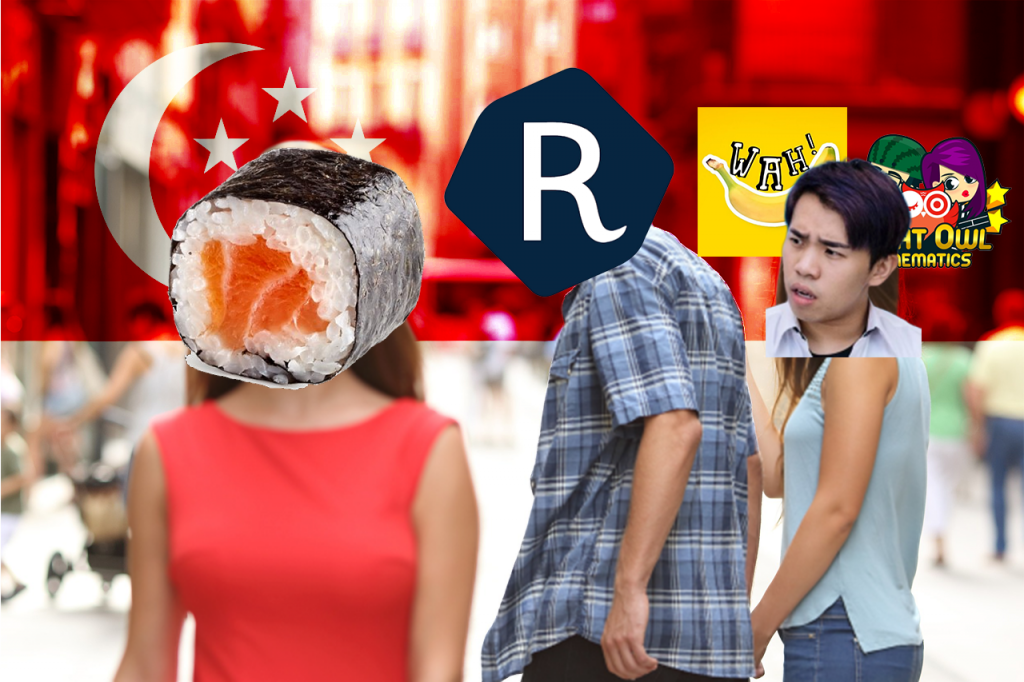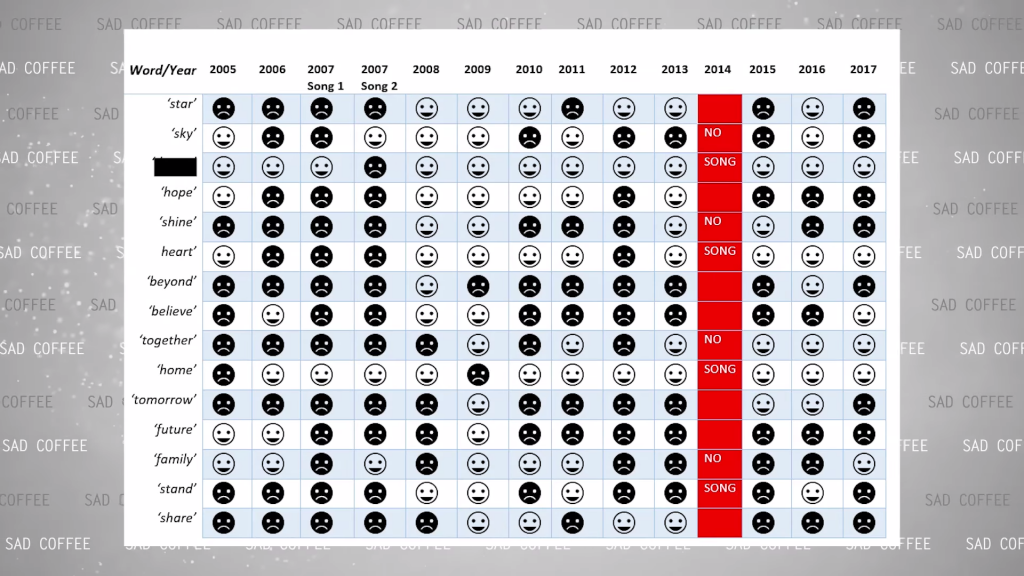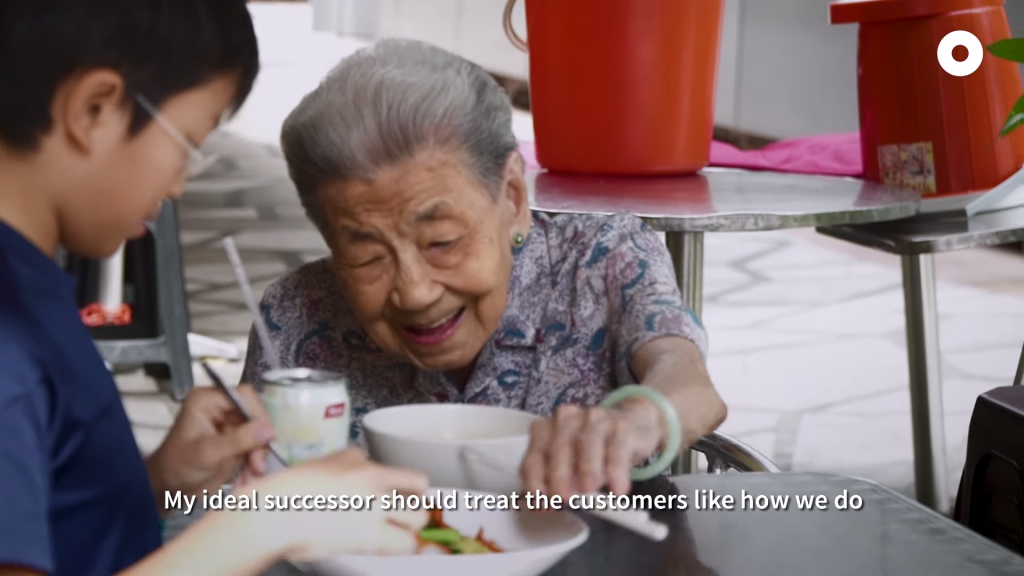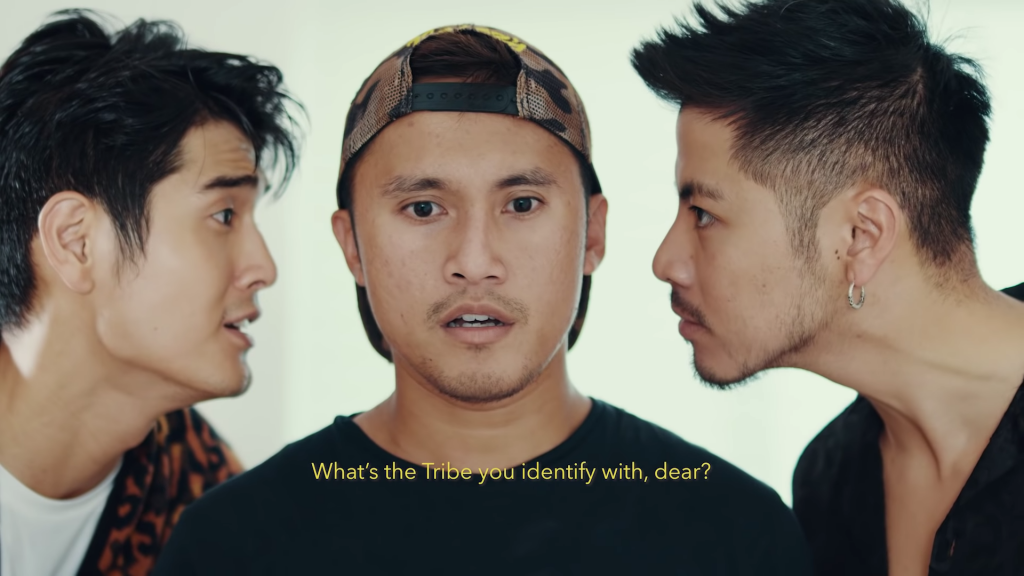Maybe satire really is dead in Singapore.
YouTuber Sneaky Sushii’s debut video was a scathing takedown of the big names of Singapore YouTube. It was also hilarious, employing memes and jokes at breakneck speed with masterful editing.
The operative word is ‘was’, because it got taken down on a copyright strike (it’s still available on social media).
We’re not covering the beef. Sushii himself is not interested in it. What’s more interesting is his statement towards the end of the video:
“But all jokes aside, I think there is something lacking in the YouTube scene in Singapore.”
As someone who’s disavowed Singapore YouTube (SGYT) because I didn’t feel it had anything to offer me, I agreed with him. I reached out to Sushii for comment to elaborate on this.
“I think YouTube in Singapore is mainly dominated by huge companies with big overhead costs that churn out content just for views,” he writes back. “I say that because it’s quite obvious that they’re reusing the same template over and over again. Nothing against it though, from a business standpoint that’s an obvious strategy once you’ve found what works for you and want to milk it for the $$$.”
He goes on espousing his dreams of being a platinum-level influencer; I wish him all the best. When all is said and done, I’m still left wondering about the state of SGYT.
Let’s get definitions out of the way first. When talking about ‘Singapore YouTube’, it’s the same few names. The mainstream is an oligopoly of the Big 3: Night Owl Cinematics, JianHao Tan, and WahBanana. Other channels vying for YouTube supremacy include The Smart Local and Trevmonki, alongside solo personalities like DeeKosh, Georgia Caney and Keiji Umehara.
Each of these channels have at least 50,000 subscribers (with JianHao Tan taking the lion’s share of 3.2 million), so there’s a substantial following. There’s no denying their content is appealing with their level of success.

“My main genre is Education/Edutainment. Channels like Civil Engineering, Sideways, PhilosophyTube,” says Vanessa.
“Peaceful Cuisine is my favourite channel—basically ASMR cooking. I watch thrift hauls too,” Valerie tells me.
“BuzzFeed. And politics—but not Singapore,” says Sham.
“I watch sports and gaming channels. A video series every now and then,” Luke lists out.
“Oh, and hobbyists!” Vanessa exclaims. “Like there’s this dude who keeps ants.”
“Ants?”
Clearly, there are some channels without a Singaporean equivalent. There are a handful of ant hobbyists on this little red dot, and much fewer who can dedicate consistent time and effort to post videos (these two channels are sadly now inactive).
But channels like BuzzFeed map especially well onto Singapore’s YouTube ecosystem. A focus on lifestyle, skits, and humour is exactly what our mainstream channels excel in.
So why are Singapore’s mainstream channels still unappealing?
Vanessa is ready with her accusations. “All the girls in the YouTube scene are portrayed in the same few ways. There’s the bimbo girlfriend who only knows how to spend money, or the naggy mother.”
“Whenever they do a secondary school episode,” she continues. “It’s twenty year-old women in the same two variations of the blue-white pinafore. And the teacher is always some chiobu in a white dress-shirt with the top unbuttoned and black specs.”
Valerie agrees with her. “The thumbnails are incredibly clickbait. It feels like they photoshop the boobs to make them look bigger.”
I can understand why the prevalence of the influencer beauty standard causes girls to be frustrated. But there has to be more besides ‘too much titty’.
“It’s boring,” Sham says, insisting I put his two words in a big block quote. I told him I’d try.
“It’s just not novel,” he groans. “The same kind of videos they made years ago, they still make now. Their audience grew but their content didn’t. The budget’s higher now, that’s it.”
Luke, who had gone to the washroom, came back and repeated the exact same thing. “It’s the same content week after week!” He shouts, wringing his hands. “It’s like eleven ways students do something-something. Or seven types of-“
He stops himself, angrily chewing on a french fry to quell his anger. “It’s obviously targeted towards kids. So yeah, it’s not for me.”

“I feel that their videos are… fake. I’m sorry, but I’m very aware that it’s a show and everything’s overproduced! Nothing feels natural!”
The table nods along.
“Influencers—who populate SGYT like flies on a cadaver—inherently feel like they are selling you something,” Vanessa continues. “It’s like watching a commercial for insurance, and not even the good kind.”
“Ya!” Sham slams the table. “Thai insurance commercials are better than all of Singapore YouTube.”
While the students celebrate the triumph of a metaphor, I’m left astounded at how they’ve organically replicated Sneaky Sushii’s video, beat for beat.
A critical reading of Sushii’s video reveals that the three steps he’s laid out to “become a Singapore YouTuber” are actually the three largest criticisms Singaporeans have about the industry. The over-reliance on sexualised women. Stagnation of content and settling for what works. Ham-fisted advertising undercutting the authenticity of these YouTubers, no matter how genuine they feel about making videos.
The necessity of these elements to drive clicks misses the point when enough people—6 people out of a sample of 6—find them alienating. Question is, can SGYT rectify these shortcomings?
Singaporeans clearly desire variation. They want different genres, and more diverse formats for existing genres to be presented in—please let the listicle die.
So where are all my SG cooking channels? The fitness gurus for the gym bros and spin class fanatics? Are there more than a handful of Youtube personalities who aren’t putting on an obnoxious front?

“Sad Coffee started as a passion project,” Johann tells me. “You know, raise your flag, see who salutes.”
His channel, spanning 23 videos over a year and a half, primarily discusses social issues in Singapore through 10-15 minute video essays. Johann himself does the voiceover, while images and graphics are braided together to form the visual front of each video.
Video essays are blogs on steroids. As Johann describes his process to me, I’m left astounded at how much work is required for each video.
“A huge chunk of the time is spent researching and writing. Especially fact checking—I want to ensure all my claims can be justified. It takes me about 3 weeks? I often have to trash scripts, and cut out huge sections of it,” he shrugs. “During research, there’s so many interlinked themes, but you have to hone in and focus to fit a reasonable length.”
I ask how much he invests in Sad Coffee.
“In terms of time, about 6 hours daily? So it’s almost a full-time job,” he muses. “As for money, my setup isn’t complex. It’s my own laptop, and the microphone is a Blue Yeti from Amazon. I spend far more on software, buying effects and music.”
“To get started I went for a $500 Premiere Pro crash course at one of those malls,” he laughs. “It was just me and one other poor guy!”
With so much going into the channel, you’d expect some return on investment. But barring a video or two going slightly viral, most of Johann’s videos only amount to a couple hundred or thousand views.
“I took a sabbatical to try out this YouTube thing at the start of 2018,” he told me. “I thought I could monetize it. But as the year came to an end, reality started to set in and I realised why there were so few people doing this.”
Johann says he’s been on his savings and doing the bare minimum of odd jobs here and there to keep the channel afloat. But with funds running low he’s forced to put Sad Coffee on a hiatus, and can only put videos out when he’s free.
“I’d be open to doing something requiring less time, like podcasts, so I can do enough paid work,” he grins. “But I don’t think Singaporeans have caught on yet.”

There’s a vast digital graveyard of amateurs who have tried and failed to do anything beyond a video or two. But even sustained efforts don’t manage to last. Johann alerts me to Inconvenient Questions, a sociopolitical channel led by former Nominated Member of Parliament Viswa Sadasivan. It ran for a year and a half, hosting a massive repository of 286 videos and interviewed Singaporeans from all walks of life. Their last video was a 51 minute special with Tan Cheng Bock. It has since been discontinued due to a lack of funding.
It puts into perspective the amount of money mainstream SGYT channels generate in order to refinance their videos in kind, given how resource intensive the industry is.
Johann recounts an incident seeing DeeKosh and other YouTubers filming at a hawker center he was at. “They had a professional set-up with all these big rigs and heavy equipment. Just for a food review video!”
While trying to divine why channels like his aren’t getting traction, I mention his conspicuous lack of presence on social media.
“I had a bad experience when Friendster was still a thing. There’s all this quid-pro-quo going on and I want to be mindful with how I spend my time. So I’m very against having to put on this online facade.”
The sentiment is easily understood, to unplug and disconnect to connect. But in this cut-throat media economy, you’ve got to at least try to be on the ball. I reactivated all my accounts since I got this gig because you never know which avenue of communication you need.
With this in mind, I ask him how he cultivates and manages his community.
“I don’t really have one, because there’s not much engagement. There’s views and likes but I can’t gain any feedback or start a conversation with those metrics, and what few comments there are tend to be… controversial.”
Johann simmers with frustration. “YouTube doesn’t even allow me to allow me to post a message to my subscribers because I need 1000!”
He’s hovering around the 800 mark.
Despite Sad Coffee’s bleak future, Johann is optimistic about SGYT as a whole.
“I’d like to think there is demand for such content. It’s my failure that the videos aren’t stimulating enough. Still, YouTube is not an appealing proposition,” he concludes. “You risk your reputation, criticism, and your livelihood with no guaranteed payment. It’s very tough for a working adult to break in.”
There’s a twinkle in Johann’s eyes as he pauses. “But the youth could.”
He talks about how being unshackled from the obligations of adulthood frees up youth to tinker with the video format and put themselves out there to attract an audience.
After all, if there’s any demographic as malleable and idealistic enough, it’s them. Dreamers who have the fortitude to cut through the YouTube algorithm that enforces the establishment of voices and aids the accretion of power that edges everyone out. Almost any rival social media platform would be dead upon arrival, given how ensconced the big names are in our public consciousness. Nobody who’s done the cost-benefit analysis would bother trying, and the fear is that soon our content will go down the same route.
But there might be a kid in their college dormitory, with nothing but their wits, a smartphone, and an idea. And who knows what history will say?

I ask if they’ve heard of Our Grandfather Story—a channel that focuses on short videos, exploring niche personalities on the margins of Singapore.
“Oh, I thought it was a PAP initiative!” Vanessa laughs. “With the branding and all.”
I gently explain that it’s the Singapore equivalent of Great Big Story—which they love—and ask if they’d be open to watching it.
“Of course, but my criteria is the same,” Sham grins. “It can’t be boring.”
I then ask if they’ve sneaked a glance at The BenZi Project, a collaboration between Benjamin Kheng of Sam Willows fame, and comedian Hirzi Zulkiflie. They churn out high quality comedy skits which feature celebrities of all stripes from Nathan Hartono to Gurmit Singh. Again, I’m met with a lukewarm, apathetic response.
“I’ve heard of it,” Valerie shrugs. “But I’m not inclined to follow more influencers.”
And there it is. Much of the misgivings about SGYT seem to stem from people creating the content. And they are all our well-known, perfect looking, Instagram dominating influencers.
So, are people just snobs? It’s edgy to bash influencers, and many of us would like to think we’re above them. From bullying Nicole Choo and degrading her writing, to the public’s sadistic glee whenever any of them are embroiled in a scandal, influencers get a great deal of unwarranted hate. Shitting on their work is just another distasteful way to express our loathing of them.
However, the sense I get from these four, is that they’re exhausted of celebrities. People are tired of their attention being monetised and their desires manipulated for profit. On a platform like YouTube, whose platonic ideal of a creator is the everyday person, why do we keep seeing the same faces? Whatever happened to the kid making videos from their own room?
As we can see from Johann, it’s tough to get yourself out there if you’re just starting. And when you do, you might just have to sell out to keep yourself from starving.
That’s not going to tide well with our youth prizing authenticity above all else.

“Wait, have you heard of NSFTV?” Luke asks.
No, we haven’t. Our ears perk up.
“They’re fairly new, and they have this web series that just ended, and I’m obsessed …”
So there are Singaporean channels that have passed the scrutiny of our cynical youth. The next day, I binged all nine episodes of said series, One Take, complete with extras and sneak-peeks, in one sitting. And I loved it.
It was like watching Shirkers on Netflix, being filled with pride at the best Singapore media has to offer. One Take pushes the envelope of the video format with a solid premise and masterful cinematography. Its choreography of images is on par with an OK Go music video on a budget. Alongside a compelling, relevant narrative, and new local talent to look out for, what’s not to love?
NSFTV isn’t well known, but the people behind it know their stuff. One Take co-creators Benedict Yeo and Tan Hui Er are Wee Kim Wee School of Communication and Information graduates bringing a fresh perspective and their expertise to navigate the perilous waters of new media. Their community is inchoate, but enthusiastic and brimming with hope for future projects.
And yes, NSFTV is all over social media.

Friends, Singaporeans, countrymen, lend me your ears. For I have to introduce the one and only, SG Bearded Aquarist.
Run by Ashley, a—no longer—bearded young man with a passion for the aquatic, the small channel is an unparalleled resource for wannabe aquascaping aficionados. Even though my only interaction with marine life has been longkang fishing for guppies, I’m still left smiling has Ashley explains cichlid behaviour with zest and zeal.
There are vibrant content creators just waiting to be discovered, even if the YouTube algorithm makes it harder than digging up five cents from under a car seat. We just have to keep an eye out, and when we do, offer these trailblazers whatever support we can. That’s how we celebrate the multiplicity of content, and encourage more to come.
Here’s to a weird and wonderful Singapore YouTube.






